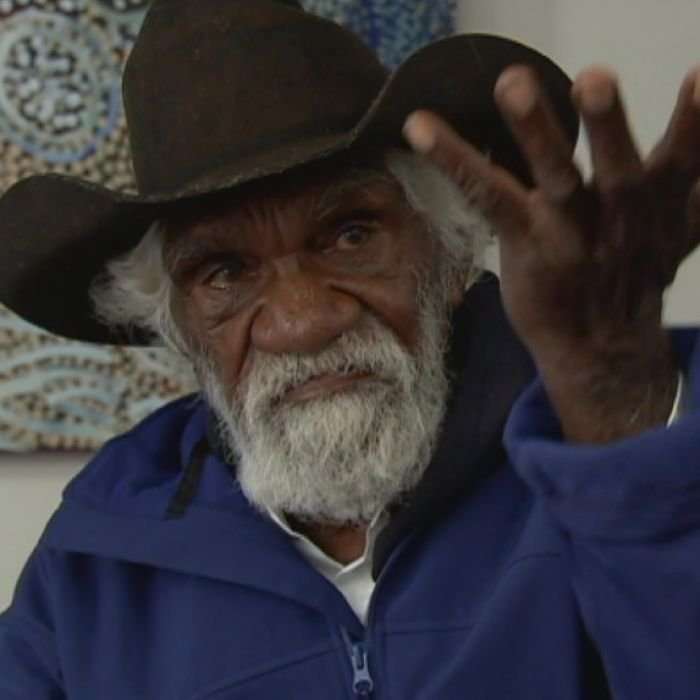Aboriginal man's story of Maralinga nuclear bomb survival told with virtual reality
In an unlikely collision of cultures, state-of-the-art 3D film technology is bringing an Aboriginal man's unique tale of nuclear bomb survival to audiences across Australia.
In the 1950s Nyarri Morgan was a young man, walking and hunting in South Australia's northern deserts.
His dramatic first contact with whites came when he witnessed a nuclear bomb explosion at the British testing site at Maralinga.
Now, as an old man, and with the help of director Lynette Wallworth and some technology, he is sharing his story in a film called Collisions that is screening in selected venues around Australia.
"It happened in a desert where people assumed there were very few people [and] there was not much life and not much to be lost," Wallworth said.
"Every one of those assumptions was wrong."
'People still have that poison today'
As the radioactive dust fell, Mr Morgan walked an ancient trade route at the edge of the test site. He had no idea of what he was witnessing.
In making the film, Wallworth asked Mr Morgan what he thought he was seeing.
"He said, 'We thought it was the spirit of our gods rising up to speak with us'," she said.
"[He said] 'then we saw the spirit had made all the kangaroos fall down on the ground as a gift to us of easy hunting so we took those kangaroos and we ate them and people were sick and then the spirit left'."
Mr Morgan is sharing his story, in his words, so it won't ever be forgotten.
"After the explosion the fallout went north," Mr Morgan said.
"Powder, white powder killed a lot of kangaroos [and] spinifex [grass]. Water was on fire, that's what we saw."
Mr Morgan said water "died" but that he and the two men he was with drank the water, even though it was still hot.
"The smoke went into our noses, and other people still have that poison today," he said.
"We all poisoned, in the heart, in the blood and other people that were much closer they didn't live very long, they died, a whole lot of them."
'In virtual reality everything becomes personal'
Mr Morgan's incredible story is told using 16 GoPro cameras on a custom made mount to create a 360-degree view, allowing viewers to dictate camera angels as they move their head through the scene.
"In virtual reality everything becomes personal," Wallworth said.
"You're present, you're not standing or sitting outside the film, you're actually inside the world that is being shown to you."
At the film's launch in Adelaide, Wallworth said Mr Morgan had been waiting his whole life to be able to share his story to ensure the younger generations carried it on.
"He said today, when he is gone, this story will exist in those young people's minds," she said on Friday.
"I think that's a really big deal. Because the loss of the story is the loss of us understanding our own country."
Topics: indigenous-aboriginal-and-torres-strait-islander, documentary, arts-and-entertainment, film-movies, nuclear-accident, nuclear-issues, sa, australia

FatQuack on August 2nd, 2017 at 12:06 UTC »
I knew they did atomic testing all through the pacific but they actually did tests in mainland Australia?
Washuchan on August 2nd, 2017 at 10:53 UTC »
That is one hell of a way to learn about the modern world.
CaravelClerihew on August 2nd, 2017 at 07:42 UTC »
He describes the test in this way: 'We thought it was the spirit of our gods rising up to speak with us' ... 'then we saw the spirit had made all the kangaroos fall down on the ground as a gift to us of easy hunting so we took those kangaroos and we ate them and people were sick and then the spirit left'.